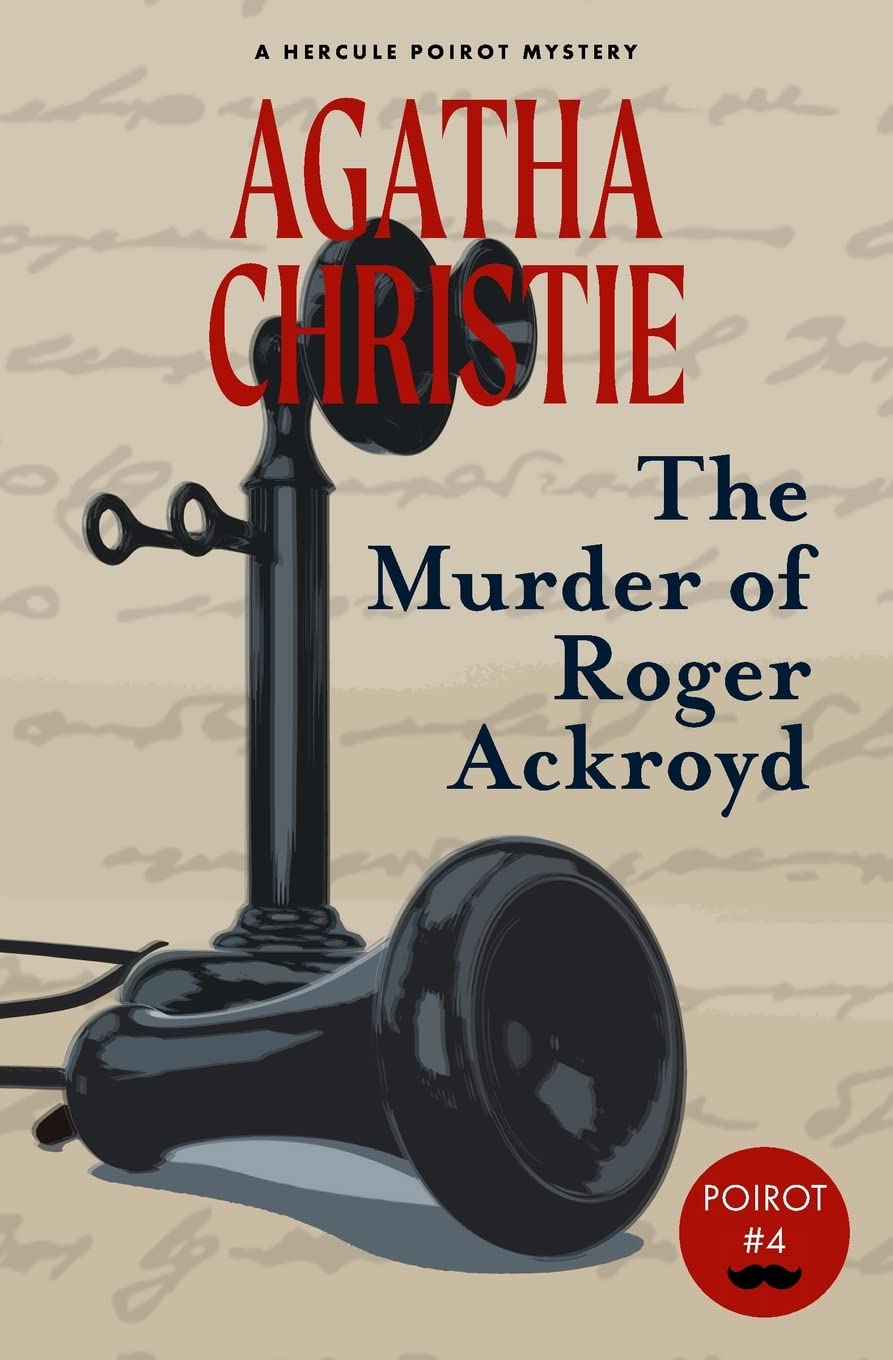
Armchair travel around the world!
Start your reading adventures with our FREE Reading Atlas.

- Around the World in 14 Books
- 7 Thrilling Book Series
- 6 Audiobooks That Are Like Theater For Your Ears



This book (228 pages) was published in June of 1926 by Warbler Classics. David read The Murder of Roger Ackroyd and loved it; it wouldn't be on our site if he didn't recommend it.
Bookshop.org is an online bookstore with a mission to financially support independent bookstores and give back to the book community.

Agatha Christie’s first novel was The Mysterious Affair at Styles, but the one that made her famous is The Murder of Roger Ackroyd. In her third novel, she gleefully subverted the mystery tropes she herself created — and it changed crime writing forever.
The setup of this novel is classic, iconic: It’s a country-house murder in a small English village — with all the cozy details you might expect: drawing rooms, parlourmaids, footprints on the windowsill. Our narrator is the village doctor, who lives with his gloriously nosy sister, and they happen to be neighbors with a retired Belgian detective who is now tending vegetables in his garden. Then a wealthy man is found behind a locked door with an antique dagger in his back. Enter Poirot.
One of the things that’s surprising about this book is its tone. Forget the solemn BBC vibes pronouncing ‘a murder most foul,’ amid creaking corridors and stern men with pocket watches. The Murder of Roger Ackroyd is rather quirkier than that. It’s brighter and funnier, more conspiratorial.
The doctor and his sister bicker with obvious affection. When Poirot is introduced, he’s offstage, and they get his name wrong. And mistakenly believe he’s a hairdresser — because of his moustache. There’s a significant scene that unfolds during a Mahjong game. Throughout, Christie keeps side-eyeing her own cliches. She has local cops talk about fingerprints and poisons as if they’ve read too many dime-store novels, and then she has her narrator explain why that ‘evidence’ is useless. Christie even drops in a sly bit where Poirot reads the manuscript of the book of the book we are reading — and then comments on it. It’s all very self-referential and delightful.
However, the tension is real; the story ventures into quite dark places — although it feels more like Knives Out than scandi-noir. Christie brings a little mischief, so instead of trudging through the gloom, it’s an invitation to join in the game.
This book was published in 1926, during the Golden Age of detective fiction. An industry-wide conversation was going on about the idea of fair play: the gentle(wo)man’s agreement of classic whodunits that the reader is privy to the same clues as the detective. There are no secret twins, or mystic visions, or clues that are only revealed on the last page. These ‘rules’ were an attempt by critics and writers to separate a solid detective story from a gimmicky thriller.
In the 1930s, a slew of mystery writers founded the Detection Club in London. Christie was part of it, as were Dorothy L. Sayers and G.K. Chesterton. It was part social club, part quality-control board for fair-play mysteries, as embodied in their oath:
Do you promise that your detectives shall well and truly detect the crimes presented to them, using those wits which it may please you to bestow upon them, and not placing reliance on nor making use of Divine Revelation, Feminine Intuition, Mumbo Jumbo, Jiggery-Pokery, Coincidence, or Act of God?
The Murder of Roger Ackroyd came in the middle of that conversation and redrew the map for mysteries. Christie keeps her promise of fair play — the clues are all there — but the emphasis shifts from poisons and locked doors to the slipperiness of character and storytelling. How the tale is told becomes as important as what’s being told.
That’s all old hat to us now. We’ve seen murders narrated by the victim, or solved by a body-hopping detective, or told in reverse, but all of that is from the echoes of this book over the last century.
Ackroyd was a career-making moment for the woman who went on to become one of the most published authors of all time. She wrote this one and then banged out another 80 or so over the next 50 years, as well as the script for one of the longest-running plays of all time.
This classic hasn’t lost its bite. It’s witty without being arch, intricate without being fussy, and unexpectedly humane in its portrayal of motives like greed, shame, pride, and love. It respects your intelligence and trusts your attention. Prepare to be outfoxed in the fairest possible way.
Ackroyd was sitting as I had left him in the armchair before the fire. His head had fallen sideways, and clearly visible, just below the collar of his coat, was a shining piece of twisted metalwork. Parker and I advanced till we stood over the recumbent figure. I heard the butler draw in his breath with a sharp hiss. Stabbed from be’ind, he murmured. ‘Orrible! — Agatha Christie
Wanna help us spread the word? If you like this page, please share with your friends.
Strong Sense of Place is a website and podcast dedicated to literary travel and books we love. Reading good books increases empathy. Empathy is good for all of us and the amazing world we inhabit.
Strong Sense of Place is a listener-supported podcast. If you like the work we do, you can help make it happen by joining our Patreon! That'll unlock bonus content for you, too — including Mel's secret book reviews and Dave's behind-the-scenes notes for the latest Two Truths and a Lie.
Join our Substack to get our FREE newsletter with podcast updates and behind-the-scenes info — and join in fun chats about books and travel with other lovely readers.

We'll share enough detail to help you decide if a book is for you, but we'll never ruin plot twists or give away the ending.
Content on this site is ©2026 by Smudge Publishing, unless otherwise noted. Peace be with you, person who reads the small type.